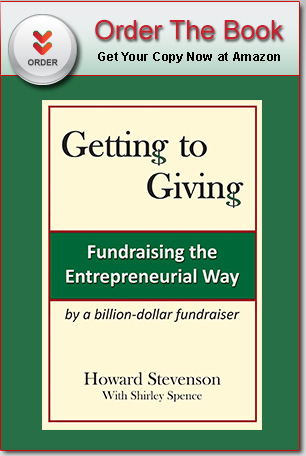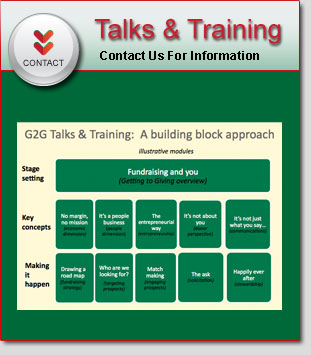Here’s a scenario I often – and painfully – find myself part of, as a board member. Development staff, eager to find new prospects, appears at a meeting to “pick our brains.” The inevitable result: a list of the usual suspects. Or they proudly appear with a list of rich people. It’s not hard to find rich people; the trick is finding the right people. Who are natural allies? What are their board involvements, their giving histories, their financial circumstances, even their personal interests? That information is available, with some work.
A variation on that scenario. Development staff presents a list of prospects and announce that the goal is to be number 1 on their giving lists. Really? I ask about our top six donors. Each had donated over $1 million to us but, as it turns out, we weren’t at the top of any of their lists. I doubt that we would have turned down the gift, had we known. You don’t have to be the most important cause on a donor’s list; in fact, that is extremely difficult. The trick is to be on a donor’s priority list, even if that is “just” number 5.
All too many fundraising initiatives are founded on unrealistic expectations. Another example: a board meeting of a venerable arts institution in Boston. A key part of the annual fundraising strategy, we heard, was to get several $250 thousand gifts. Really? It was readily conceded that we weren’t likely to be number 1 on anyone’s list. But let’s say that we were the beneficiaries of five percent of their philanthropic dollars. Simple math; that would mean they were giving away $5 million a year. How many people in Boston do that? No answer. Even a $50 million foundation – of which there were just a few – might ante up for a capital campaign, but certainly not for annual support.
If aiming too high is a problem, so is aiming too low. For example, the conservation group in the area where I have a summer home wanted to raise $500,000 to protect threatened marshlands. The director’s plan was to solicit 100 donations of $5,000 each. Knowing the community and its means, I suggested getting one donation of $100,000, and two of $50,000, to set a giving norm, and then going to neighbors with that information. I call that “getting the bell cow”—in other words, finding someone to lead the herd. It worked: The campaign was completed in less than two weeks. The lesson: aim high, while still being realistic.
In parting, another story, as a word of caution. One member of a development team that I was leading was renowned for his extensive analysis. Some of his colleagues referred to him as “ready, aim… ready, aim… ready, aim…” You get the picture. Being prepared is good, essential in fact. Analysis-paralysis is not. Eventually, you must “fire,” armed with the best information available, and the willingness and ability to listen and learn as you engage your prospect.




